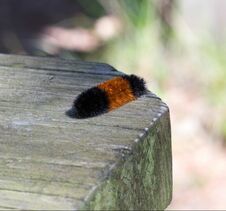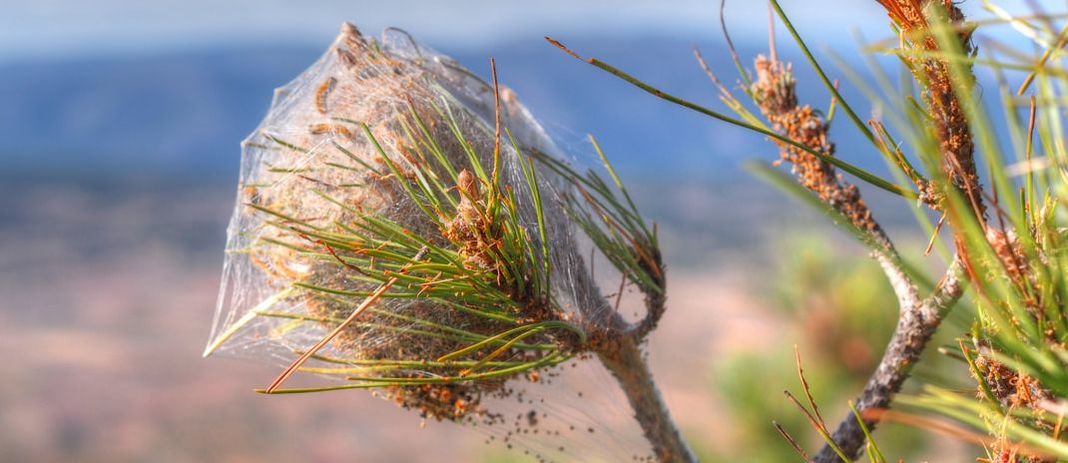 Mint Mint If you are a homeowner with a serious green thumb, there are plants that keep bugs away to protect your family. Individual plants fight off insects. Additionally, these flowers deliver energy and color to your landscape. Below is a list that will keep your outdoor space dazzling and fun. Plants that Keep Bugs Away: Marigolds The fragrance of marigold will dissuade gnats and lice from messing with your plants. Put in flower beds close to your doors or your garden, stopping pests and even rabbits from destroying your plants. Chrysanthemums This flower may be the top plant to deter bugs. Spider mites, ants, silverfish, Japanese beetles, and ticks stay way if you put some chrysanthemums. Insecticides use an element from this flower due to how good it is. These flowers discourage:
Mint Mint plants may repel ants, gnats, and spiders. Use caution when you plant mint since it spread quickly. Basil Fend off flies, mosquitoes, and gnats with this fantastic herb. Plant some basil by your front and back doors to deter bugs from getting inside. You also have basil to use in your recipes. Citronella grass We all know this is a component of mosquito repellents. But most folks don't know it's a grass. Put citronella in planters close to your doors to stop insects from coming inside. Lavender Gnats hate the scent that so many of us enjoy. Put some plants in your windowsills. Chives If you have chives growing, flies and Japanese beetles will be a thing of the past. Garlic Famous for its health advantages and seasoning, garlic will keep flies, moths, beetles, and maggots from your plants. Put garlic plants close to your rosebush to stop aphids from snacking on your flowers. Rosemary Rosemary safeguards your veggie plants by warding off a vast assortment of bugs that desire to eat your plants. Protecting Your Lawn These plants should help you have to deal with fewer insects. Though, bugs could be diligent and discover ways to get past many defenses. Call us at Syracuse Tree Service when you want more information on bug resistant plants.  Strolling across your lush, something isn't right. You see weird raised trails that crisscross the canvas of green. Your next step tells the story. Your heart sinks in your chest as your foot sinks into the turf. You have moles and your next move is learning how to get rid of moles. You have Moles It is possible to live in harmony with moles. The tunneling they are famous for does have a good impact when it comes to soil aeration and reducing the insect population. We've all seen the damage done as a yard is scarred by shallow tunneling. Underground, the effects more harmful by destroying cultivated plants, hindering turf growth, and disrupting root systems. Also, these tunnels move traffic from critters such as voles and mice that will gladly eat expose roots. Eliminating Moles Getting rid of moles can be complex. Using a dog or cat to do your dirty work is a possibility. More humane choices are available, so you don't have to fake the mole damage is the most wonderful thing you've ever seen. The main complaint is the visible damage to the turf. One solution is to exchange grassy areas with hedges, gardens, or other ground coverings. For a lot of homeowners, this might seem impractical. If the lawn isn't being moved, moles can be deterred from digging tunnels that harm the turf. Sometimes, peaceful coexistence just isn't a choice. Over the years, mole deterrents from vibrating windmills to pickle juice have been used over these years with some success. Chemical treatments are plentiful, but the answer might be as simple as picking the right plants. Contact an arborist at Syracuse Tree Care to learn which methods are best for your landscape. Mole Repellents Allium, marigolds, fritillaria and daffodils put along the perimeter of the yard are all effective, natural mole repellents. Also, shallots and garlic discourage moles. Castor bean plants are excellent as well, though it is deemed poisonous and must not be used where children or pets play. If moles are already there, it might take some encouragement to get them gone. Castor oil is a confirmed winner when it comes to non-lethal, safe mole extermination. Using a sprayer and garden hose, one quart of castor oil will treat over 4,000 square feet of lawn. Castor oil also comes in a granule form which covers over 900 square feet per pound.  You're correct if you think that trees are frequently overlooked in plant lists for bees. Up until now, more folks seemed to be interested in trees that didn't attract bees. Planting pollinator patches have become a critical gardening trend as folks are becoming aware of the declining bee population. What trees do bees like? Below are some great species. American linden or basswood. A tree with pale-yellow flowers in June trailed by summer nutlets. Thrive over 45 feet tall and up to 35 feet wide. Southern Magnolia. A spectacular evergreen with white flowers and shiny green leaves with tan undersides. Gets over 30 feet tall and over 20 feet wide. Chokecherry. A little tree that gets bunches of white flowers from April to May. Flourish over 15 feet tall and 15 feet wide. Redbud. A tiny flowering tree that's one of the first to blossom in spring with little lavender flowers all along the limbs even before the leaves grow. Develops between 15 to 20 feet tall and over 20 feet wide. Crabapple. Another small flowering tree with attractive blooms of pink, magenta, and white in early spring then nice-size fruits in summer and fall — flourishes up to 20 feet tall and over 15 feet wide. Tupelo or Black Gum. A damp-soil-tolerant, medium-sized tree with little green-white flowers in late spring and vivid maroon fall foliage. Females produce blue fruits that birds enjoy. Gets up to 50 feet tall and over 25 feet wide. Serviceberry. An excellent small April-to-May thriving tree with white flowers followed by blue June fruits that birds adore. Also grows lovely burnt-gold to maroon fall foliage. Gets over 15 feet wide and tall. Seven-son flower. This one is native to China but appealing to butterflies, bees, and hummingbirds due to its late-summer bloom time (September, when few other trees are Gets close to 18 feet tall and up to 10 feet wide. If you would like more information on what trees are attracted to bees, get in touch with a Syracuse tree service company. An arborist can let you know what to do to get your pollinator garden.  The woolly bear caterpillar (aka fuzzy and woolly worm) has the reputation of being capable of forecasting the upcoming winter weather. Regardless if this is folklore or fact, learn some insight into the woolly bear caterpillar and how to interpret the worm. Here’s the tale: The Woolly Bear caterpillar has 13 separate segments of either black or rusty brown. The bigger the rusty brown sections (or, the browner the parts are), the milder the upcoming winter will be. The blacker it is, the harsher the winter. A woolly bear caterpillar is a form of the tiger moth (Isabella). This mid-size moth, with yellow-orange and cream-colored wings dotted with black, is familiar from northern Mexico throughout the US and across the southern part of Canada. As moths are concerned, the woolly bear caterpillar isn’t great to look at matched with other types, but its young larva, known as the black-ended and woolly bear is one of the few caterpillars most folks can identify. Woolly bears don’t feel much like wool. They are covered with stiff, short bristles of hair. Do they forecast the winter? Between 1948 and 1956, a medical professional, Dr. Curran, counted an average brown-segment ranged between 5.3 to 5.6 from the 13-segment total, signifying that the brown band took up over a third of the woolly bear’s body. The following winters were milder than usual, and Dr. Curran decided that the folklore might be real. But Curran was under no scientific illusion. He understood that his data samples were minute. Although the tests legitimized folklore to some, they were just a reason to have fun. Thirty years after Curran’s experiment, the woolly bear brown-segment tally and winter forecasts were revived thanks to the nature museum at Bear Mountain State Park. The annual counts have continued, often by word of mouth. If the rusty band is full, then it will be a mild winter. The blacker there is, the harsher the winter. If you find any other insect in your tree, ask a knowledgeable tree specialist to check it out for you. If any fruit trees in your Syracuse neighborhood have swiftly lost the leaves that were starting to grow, the offender is likely to be a tent worm, a common insect found in most corners of the US. Even though a tent worm may eat about all the leaves on a tree, the damage is hardly permanent. In many instances, trees that have lost their leaves in early spring can grow them back around July, mainly when tent worms have stopped feeding. Healthy trees can last around two or three years of complete defoliation. That doesn't mean the loss of leaves to these hungry tent worms is safe for a tree. It does diminish its vigor and makes it more susceptible to diseases and pests. Nonetheless, we have seen many fruit trees made bare thanks to tent worms. Then, they recover well and flourish into healthy grown trees. What Are Tent Worms? Tent worms are more of a minor nuisance or eyesore instead of a real threat. Though, eliminating a tent worm is sometimes necessary. We can discuss how to stop a tent worm and how to kill it when needed. When tent worm removal is needed, the egg or nest can typically be picked up by hand. Egg cases can be seen once leaves drop from trees in autumn. Bigger nests can be gone by pruning them out or wrapping them around a stick. The best time for tent worm removal is evening or early morning while they’re still probably in the nest. Using different types of parasitic wasps can also help eliminate tent worm. Fabricating a welcoming setting for birds is a great tent worm remedy. Sometimes eliminating tent worms means killing them. While little infestations can be taken care of by putting the nests into soapy water, insecticides work better for more significant populations. Bacillus thuringiensis is one that is very effective. Since this is a particular insecticide, it kills tent worms only, remaining safe for other wildlife. If you don’t want to take on your tent worms on your own, ask a Syracuse tree care service company for help. |
AuthorWe at Syracuse Tree Service want to help you with your tree service needs, our blog is where we provide helpful tips and ideas for the health of your trees. Archives
December 2020
Categories
All
|
- Home
- Services
- About
- Contact
-
Service Locations
- Liverpool Tree Service
- North Syracuse Tree Service
- Cicero Tree Service
- Baldwinsville Tree Service
- Manlius Tree Service
- Weedsport Tree Service
- Clay Tree Service
- Bridgeport Tree Service
- Lafayette Tree Service
- Fayetteville Tree Service
- Chittenango Tree Service
- Camillus Tree Service
- Onondaga Tree Service
- East Syracuse Tree Service
- Blog
|
Home | Services | About Us | Contact Us
Liverpool | North Syracuse | Cicero | Baldwinsville | Manilus | Weedsport | Clay | Bridgeport | Lafayette | Fayetteville | Chittenango | Camillus | Onondaga | East Syracuse © Syracuse Tree Care 2017
Syracuse Tree Care 4736 Onondaga Blvd Suite 112 Syracuse, NY 13219 (315) 692-0186 |
|


 RSS Feed
RSS Feed